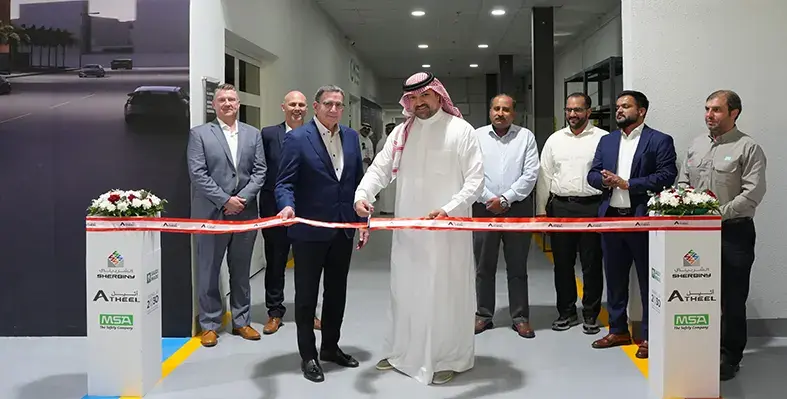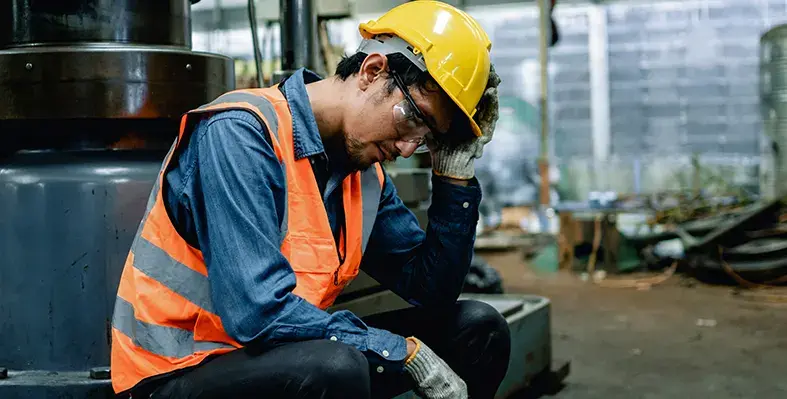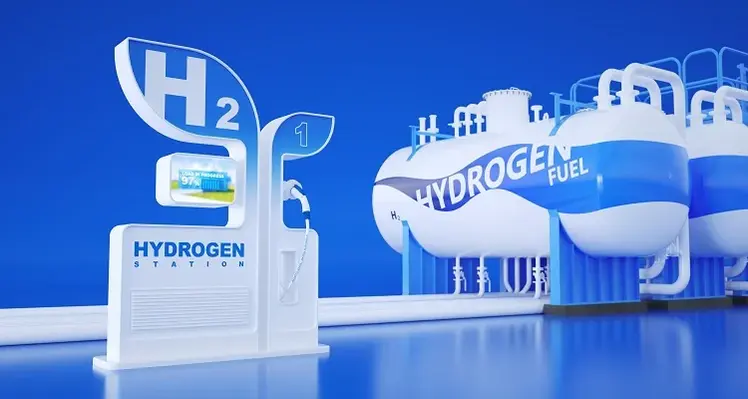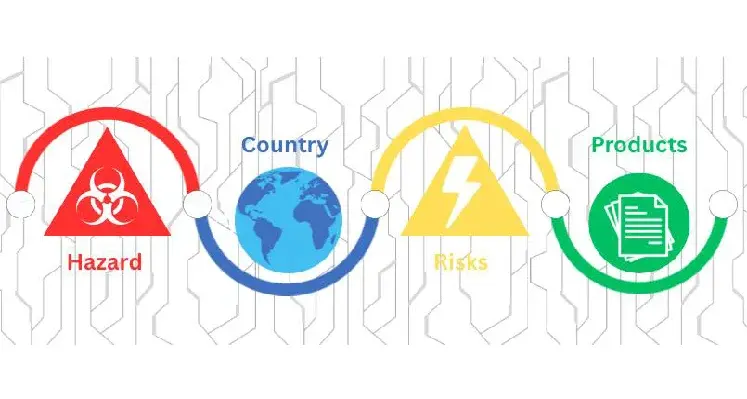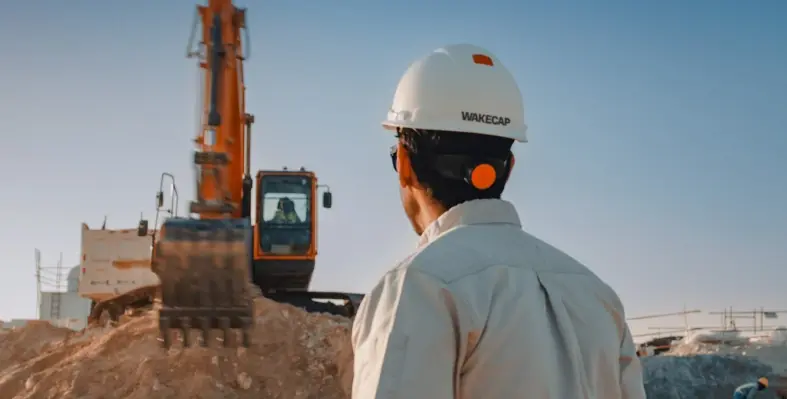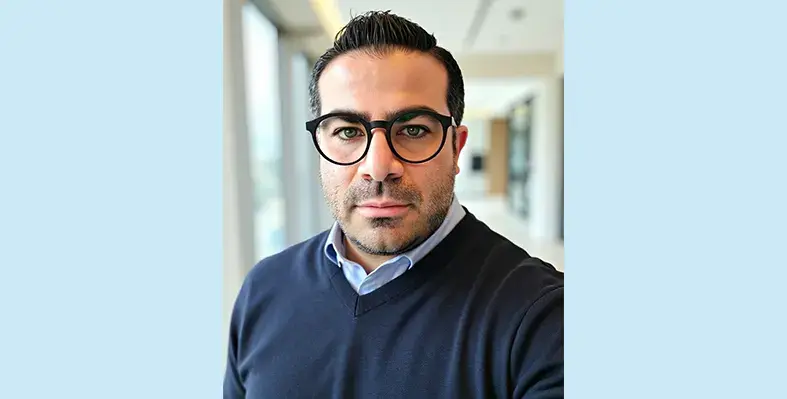Industrial Insights
Industrial Insights
- Details
- Louise Waters
- Technology
- Topic: Technology
- Date: 30 May 2025
- Year: 2025
With more than two million Muslims set to descend on Mecca for the annual hajj pilgrimage, Aramco Digital, in collaboration with the Communications, Space and Technology Commission (CST) has carried out a successful trial in crowd management using AI and specialised communications services in the Holy Sites
The trial was carried out in partnership with the Supreme Authority for Industrial Security, the Saudi Water Authority (SWA), and Saudi Arabia Railways (SAR).
The initial operational deployment of the 450 MHz mission-critical network combines AI-powered crowd management, secure communications and integrated digital infrastructure to enhance field operations and ensure a safer and more connected pilgrimage experience.
It will enable seamless, real-time voice and video communications, ensuring the quality and continuity of services provided to pilgrims while offering secure, high-efficiency connectivity with instant response, unaffected by network congestion.
The initiative reflects the network’s readiness to operate in complex, high-density environments – enabling in-depth performance analysis, real-time insight generation and faster decision-making across operations.
The system will provide real-time crowd and vehicle analytics, with instant detection of crowd density, vehicle types and movement patterns. Edge AI enables immediate recognition of safety incidents and traffic anomalies, enhancing control, reducing latency and eliminating dependence on the crowd.
By leveraging AI-powered crowd management, secure communications and integrated digital infrastructure in a complex, high density environment, the system sets a new standard in safety and efficiency and is set to enhance co-ordination for future Hajj operations.
The trials were conducted using specialised wireless communication network operating in the 450 MHz band, which was licensed to Aramco Digital in October 2024.
Eid AlHarbi, president of connectivity at Aramco Digital, commented, “The initial operational development of the mission-critical network during this year’s Hajj represented a pivotal milestone in demonstrating the network’s performance and resilience within one of the most operationally intensive and high-density environments. This step supports the broader national rollout, positioning the network as a key enabler for industrial sectors to accelerate their digital transformation in full alignment with Saudi Vision 2030.”
- Details
- Louise Waters
- Industrial Insights
- Topic: Industrial
- Date: 29 May 2025
- Year: 2025
MSA Safety has announced a partnership with Mohammed Hassan Sherbiny for Commerce LLC to assemble and supply MSA’s line of General Monitors S5000 Gas Monitors in Saudi Arabia
Sherbiny, a leader in industrial local manufacturing, offering premium equipment and solutions for the oil and gas industry, will assemble the MSA products locally at its facility in Al-Khobar. The facility has been approved by Saudi Aramco under its In-Kingdom Total Value Add (IKTVA) program.
The S5000 Gas Monitor utilises innovative technology providing improved sensor performance in high-risk applications. It is also a direct replacement for customers using the previous model of hydrogen sulfide detectors.
“We’re very excited to have this product assembly partnership in place,” said Dave Howells, president of MSA International, adding that the company is focusing on growing its global detection business. “By providing local assembly capabilities and supporting Saudi Aramco’s IKTVA program, Sherbiny enhances our ability to serve customers in the region, with faster delivery while also strengthening our technical support capacity, quality control and customer service.” He added that MSA Safety will expand its local service and training teams to further support Sherbiny and its growing customer base.
The Middle East is a strategic growth region for MSA Safety, and the partnership will enhance MSA's ability to build a substantial fleet of fixed gas and flame detectors and related services in the Kingdom. Howells stressed that the company welcomes the opportunity to support Saudi Aramco's IKTVA program and Saudi Arabia's Vision 2030 program.
Majed Sherbiny, chief executive officer for Mohammed Hassan Sherbiny for Commerce LLC, commented, “We are proud to be one of the premier partners for Saudi Aramco over the past 35 years, and we are thankful for them in supporting our local manufacturing initiatives that enable us to directly provide the best quality products and services that our customers deserve.
“Our partnership with MSA to locally assemble its state-of-the-art detection technologies, like the S5000 Gas Monitor, represents an exciting new phase in that partnership,” he went on. “We view the partnership as a starting point that can lead to more local assembly work over the coming years, as we are committed to fulfilling the Kingdom’s Vision 2030 economic development program, alongside Saudi Aramco and its IKTVA initiative.”
- Details
- Sania Aziz
- Industrial Insights
- Topic: Fire Safety
- Date: 28 May, 2025
- Year: 2025
Aluminium Bahrain B.S.C. (Alba), the world’s largest aluminium smelter on one site, has formed a strategic partnership with the National Fire Protection Association (NFPA), a U.S.-based global non-profit dedicated to advancing fire prevention and safety for nearly 130 years.
The agreement was formalised this month during a signing ceremony between Alba’s chief executive officer Ali Al Baqali and NFPA MENA’s director of international business development, Eng. Dana Kamal.
The three-year collaboration is set to promote knowledge-sharing and the exchange of best practices in occupational health, safety, and fire prevention.
“Joining forces with NFPA translates Alba’s ambition to not only be the world’s largest aluminium smelter but also a global leader in industrial safety,” said Al Baqali.
“As the first aluminium smelter in the region and the first manufacturing company in Bahrain to embark on this journey, we are proud to lead the way, learning from the best while sharing our advancements to contribute to a safer and more sustainable industrial world starting from Bahrain.”
Eng. Dana Kamal added, “We are proud to work with Alba, one of the world’s largest aluminium smelters. This agreement marks a shared commitment to advancing fire and life safety standards within Bahrain’s industrial sector. By aligning with the NFPA Fire & Life Safety Ecosystem, we aim to help Alba maintain high safety standards as it continues to grow its operational footprint.”
Under the agreement, Alba and NFPA will develop a joint action plan focused on hosting awareness forums, training programmes, certification initiatives and conferences. These efforts will aim to promote industry best practices in fire safety while aligning fire prevention and occupational safety standards through shared insights, research, and data analysis.
- Details
- Sania Aziz
- Industrial Insights
- Date: 27 May, 2025
- Year: 2025
Zebra Technologies, which provides digitisation and automation workflows, is set to showcase advanced solutions for electric vehicle (EV) quality, compliance and safety at The Battery Show Europe, taking place in Germany from 3-5 June.
Automotive OEMs, machine builders and systems integrators are increasingly seeking better support, as undetected errors during manufacturing, inspection and testing stages can lead to significant safety risks for road users and financial losses through refunds, compensation and vehicle recalls.
Customers expect vehicles to be free from defects that could result in repairs or replacements.
“We know that quality, compliance and safety begin upstream at the point of manufacturing,” said Stephan Pottel, manufacturing strategy director, EMEA, Zebra Technologies.
“Materials, components, systems and finished products need to be delivered with the highest levels of quality, with defects and anomalies quickly identified and resolved.
This is true for the automotive and electric battery (EB) manufacturing sectors and suppliers who contribute across the supply chain.”
According to Zebra’s Manufacturing Vision Study, the most significant quality management challenges today include real-time visibility (28%), keeping up with new standards and regulations (28%), integrating data (26%) and maintaining traceability (23%).
Adopting automation
“At the heart of these issues is the ability to inspect—materials, components, systems and finished products—with high levels of accuracy, speed, and efficiency,” said Pottel.
“Today, organisations have a range of machine vision software, cameras and smart sensors, deep learning tools, 3D sensing, and robotics at their fingertips, but many are challenged with understanding and leveraging these options to maintain trust across their chains and among customers.”
As manufacturing leaders across Europe struggle to keep pace with technological change, there is growing interest in how tools like AI, 3D sensing and machine vision can be used to enhance quality control in EB production.
Many current systems operate on rule-based logic, which often cannot handle increasingly complex inspection requirements at scale.
Pottel, who will attend The Battery Show Europe from 3–5 June in Stuttgart, Germany, will join Zebra’s machine vision and manufacturing experts to demonstrate practical applications of new technology in safeguarding EB production.
Examples include the use of machine vision and 3D sensors to detect microcracks or contaminants in battery cells, ensuring structural integrity and safety. For module assembly, 3D profilers and deep learning tools enable precise weld inspection and alignment verification, while in battery pack and cover-to-tray assembly, end-of-line checks confirm structural integrity and alignment of electrical components and connectors.
Mounted on autonomous mobile robots, GigE vision cameras can enhance efficiency by enabling accurate, automated picking of EV battery modules, reducing the need for manual inspections and increasing overall production speed.
- Details
- Sania Aziz
- Industrial Insights
- Topic: HSE
- Date: 26 May, 2025
- Year: 2025
The International Marine Contractors Association (IMCA) has released its 2024 Safety Statistics Report, revealing that ‘line of fire’ incidents were the leading cause of lost time injuries (LTIs), accounting for more than half (52%) of all such cases among marine contractor members.
IMCA has tracked safety metrics annually since 1996 and found that the overall Lost Time Injury Rate (LTIR) held steady at 0.3 incidents per million hours worked, and a significant improvement from 2010, when the rate was more than double.
While the LTIR evened out, the Total Recordable Injury Rate (TRIR) moved upward from 1.07 to 1.1 injuries per million hours worked, echoing wider trends seen across the energy industry.
Offshore operations with IMCA contractors, however, saw a marginal improvement, dropping from 1.47 in 2023 to 1.38 in 2024.
Beyond ‘line of fire’ injuries, slips and trips were the second most frequent cause of LTIs, recording 22% of incidents.
Improvements seen
Yet, perhaps most notably, the Fatal Accident Rate (FAR) saw a marked improvement, halving from 0.63 fatalities per 100 million hours worked in 2023 to 0.3 in 2024.
For offshore personnel, that figure dropped to a record low of 0.18. Data for the report came from 198 IMCA contractor members, contributing a record-breaking 1,015,000 hours, marking the most comprehensive dataset in the association’s history.
The report was unveiled on 15th May 2025 at SEC Glasgow, during a safety session within the offshore wind stream at All-Energy—the UK’s premier renewable and low-carbon energy exhibition.
“I am delighted by the increase in IMCA members reporting their safety statistics. Reaching over one billion working hours of data is a true milestone,” said IMCA CEO Iain Grainger, who chaired the All-Energy safety session. “Collaboration and integrity are two of our core values and the willingness of our members to share their data for the good of the industry is a clear reflection of this,” he said, adding, “The key question for industry safety professionals now is ‘how do we drive down incident rates still further?’. Line of fire incidents will become a key focus for us in the year ahead, and we look forward to working closely with our members and partner organisations to achieve genuine progress in this area.”
Jim Cullen, IMCA technical director, shared, “The annual IMCA safety statistics report provides essential input to how our sector is performing. I’m pleased that we have had a record high number of almost 200 member companies contributing their statistics. We should not rest until all IMCA contractor members contribute and report to get the best possible picture of where to focus our collaborative future efforts on injury reduction.”
- Details
- Louise Waters
- Industrial Insights
- Topic: HSE
- Region: Middle East
- Date: 23 May 2025
- Year: 2025
As temperatures heat up, Oman’s Ministry of Labor, represented by the Occupational Safety and Health Department, has launched the SafeSummer campaign
The campaign aims to raise awareness among workers and employers about the risks of heat stress during the summer and the need to take preventative measures to preserve the health and safety of workers, especially in open workplaces exposed to direct sunlight.
Oman’s regulations prohibit outdoor work at construction sites or open areas exposed to high temperatures from 12.30-3.30 pm during June, July and August to protect workers from heat-related illness and injury.
The Ministry stresses the importance of adhering to the midday work stoppage and urges private sector companies to comply with the rule to avoid penalties and ensure worker safety.
It comes as the country has experienced very high temperatures of more than 45 degrees in some areas, and as higher temperatures and more frequent and severe heatwaves are recorded globally due to the impact of climate change.
Oman’s Ministry of Labor, represented by the Occupational Safety and Health Department, in cooperation with the Ministry of Public Health, recently organised an awareness seminar for workers and employees of MedGulf Construction Company. It educated participants on methods and techniques for preventing heat stress, as well as the importance of avoiding direct exposure to sunlight and adhering to safety guidelines and standards at work sites.
The Occupational Safety and Health Administration distributed cooling suits, which help lower body temperature and protect workers from heat stress using advanced cooling technology.
Elsewhere in the GCC
The other Gulf states also enforce midday work bans during the summer months, as well as implementing measures to combat heat stress. The UAE, for example, prohibits all types of work carried out under direct sunlight and in open spaces form 12.30-3pm from 15 June to 15 September. Employers are required to provide shaded areas for workers, adequate cooling devices, sufficient drinking water and first aid equipment at work sites.
Saudi Arabia prohibits outdoor work from 12-3pm from 15 June to 15 September. The Ministry of Human Resources and Social Development has issued guidance on mitigating heat stress, including breaks, rest areas, regular hydration, working in teams and immediate response to heat stress symptoms.
Many companies in the region run summer safety campaigns to raise awareness of the dangers of occupational heat stress. Emirates Global Aluminium (EGA) for example has run a yearly 'Beat the Heat' programme for over a decade, a comprehensive, summer-long initiative which focuses on raising awareness among employees about the early signs of heat-related illness and empowering them to take proactive measures to prevent its onset.
It incorporates several measures to prevent heat-related illnesses, including hydration tests conducted before and during shifts, regular breaks, and cooling showers. The programme also features cooling booths, drinking stations, icemakers, and portable air conditioning units installed throughout the production areas to ensure that both employees and contractors remain cool and comfortable during their work shifts.
Heat-related illnesses such as heat exhaustion and heatstroke pose a significant risk for anyone working outdoors during the intense summer heat, and can pose a threat to life if not addressed promptly. In the longer term, heat stress can lead to the development of serious chronic diseases. Furthermore, as the ILO points out, the mental health impacts must also be considered, as well the numerous accidents and injuries caused by impaired mental performance, slippery and heated surfaces and unsuitable personal protective equipment (PPE).
- Details
- Sania Aziz
- Industrial Insights
- Date: 22 May, 2025
- Year: 2025
NSF, a global public health and safety organisation, has officially opened its new Middle East headquarters in Dubai Science Park.
The company said ina press statement, "This strategic move marks a major step in NSF’s 40-year journey in the region, underlining its long-term commitment to supporting public health and advancing safety standards across the Middle East."
The new facility will serve as the central hub for NSF’s activities across the Middle East and North Africa (MENA), aligning with its global mission to improve human and planetary health.
It will provide comprehensive services to the regional water industry, including testing, auditing and certification.
Building on a strong regional presence, NSF has already certified thousands of companies, playing an instrumental role in enhancing public health safeguards.
James Howe, vice president of NSF EMEA, commented on the expansion, “NSF’s new MENA headquarters in Dubai Science Park marks a pivotal moment in NSF’s history in the region. This new facility will allow us to better serve our clients and partners across the region, bringing our global expertise and standards closer to local markets. We’re excited about the opportunities this presents for collaboration and growth.”
NSF has been setting global benchmarks in water safety for over 80 years.
In the MENA region, a key focus has been on improving water quality and safety standards.
Its well-established drinking water standard, NSF/ANSI/CAN 61, was recently adopted into the technical specifications of Dubai Electricity and Water Authority (DEWA).
Ahmad Onnab, senior manager Water, Middle East & Africa at NSF, stressed the significance of this development: “Water safety is a critical issue in the MENA region. Our new headquarters will strengthen our ability to work with local authorities, governments, businesses, and communities to ensure the highest standards of water quality, safety and sustainability. International standards such as NSF/ANSI 60 and 61 have been instrumental in improving water treatment processes across the region and are increasingly mandated by national water regulations in the region, including the UAE, Saudi Arabia and Oman. We look forward to building on this foundation, helping this region on its journey to safer and healthier water systems.”
- Details
- Sania Aziz
- Industrial Insights
- Date: 21 May, 2025
- Year: 2025
WEG, a global leader in energy and automation solutions, has launched a state-of-the-art Utility-Scale Battery Energy Storage System (BESS) in Europe, designed with a strong emphasis on safety, reliability, and sustainability.
This comprehensive energy storage solution addresses the growing need for secure and efficient energy systems, offering flexible integration for diverse applications while prioritising operational safety.
The WEG BESS is a modular, scalable system tailored for power generation plants, transmission and distribution centers, and renewable energy integrations.
It supports on-grid, off-grid, and microgrid operations, ensuring energy resilience while incorporating advanced safety mechanisms to protect both the system and its environment.
Central to the WEG BESS is its sophisticated Energy Management System (EMS), which provides real-time monitoring and control for seamless integration into existing electrical networks.
The system is engineered with robust safety features, including advanced HVAC systems for thermal regulation and state-of-the-art fire control mechanisms to mitigate risks and ensure safe operation across diverse conditions.
Enhancing safety
High charging and discharging speeds, high energy density, and low maintenance requirements further enhance its reliability and safety profile.
"Safety and reliability are at the core of our Utility-Scale BESS," said Marek Lukaszczyk, marketing manager at WEG. "This system not only meets the demand for sustainable energy but also ensures secure and dependable operation, safeguarding infrastructure and communities."
The WEG BESS is designed with environmental and operational safety in mind. It produces no pollution, integrates seamlessly with renewable energy sources, and offers an extended service life, minimising environmental impact and maintenance risks.
The system supports critical energy functions such as peak shaving, load leveling, voltage and frequency regulation, and spinning reserves, all while maintaining stringent safety standards.
Applications for the WEG BESS are extensive, with safety as a key focus. In power generation, it enhances energy quality through voltage and frequency regulation while ensuring stable and secure power supply.
For transmission and distribution, it reduces peak demand and balances loads, deferring costly infrastructure upgrades while maintaining operational safety.
The system’s versatility includes black start capabilities, power factor regulation, and energy shifting, enabling safe and adaptable energy management.
Built with precision-engineered components, including a bidirectional converter, battery bank, power transformer, and a custom-designed E-House, the WEG BESS is a fully customisable solution.
These components are designed to work in harmony, ensuring safe, reliable, and efficient performance tailored to each installation’s unique requirements.
With the launch of its Utility-Scale BESS, WEG reinforces its commitment to advancing energy sustainability while prioritising safety.
- Details
- Louise Waters
- HSE
- Topic: HSE
- Date: 20 May 2025
- Year: 2025
Andrew Dennant, general manager for HIMA Middle East FZE highlights the need for advanced systems to be integrated into the hydrogen value chain to ensure the successful and secure adoption of hydrogen in line with the UAE's sustainability goals
As the global energy landscape transitions toward sustainability, hydrogen has emerged as a promising resource, particularly for nations such as the UAE, where clean energy and sustainability are central to national priorities. While hydrogen offers substantial potential as an energy source and reduces carbon emissions, its safe use requires advanced functional safety solutions, especially in large-scale industrial applications.
The role of hydrogen in a sustainable future
Hydrogen is gaining increasing attention as a viable alternative to traditional fossil fuels. Currently, most hydrogen used in industrial processes is derived from natural gas, commonly called grey hydrogen. However, green hydrogen, produced from water using renewable energy sources such as wind or solar power, is becoming increasingly significant. This process enables a substantial reduction in carbon emissions, positioning green hydrogen as a key component in the transition to a global zero-emission energy system.
In the UAE, green hydrogen is expected to play a crucial role in decarbonising various sectors, including power generation, transportation and heavy industry. While hydrogen’s adoption remains limited, its use is anticipated to grow significantly as both technology and infrastructure continue to evolve.
Safe use of hydrogen in industrial applications
Hydrogen is already widely utilised in industrial processes, such as ammonia production for fertilisers and in high-temperature manufacturing processes. Despite its advantages, hydrogen poses unique safety challenges due to its highly flammable nature. Leaks or uncontained releases of hydrogen can result in significant safety hazards. Therefore, hydrogen must be handled with the utmost care during production, storage and transportation.
Ensuring the safe use of hydrogen in industrial settings requires the deployment of advanced safety solutions. These systems must be designed to mitigate the specific application risks if hydrogen is to be used safely throughout their entire lifecycle.
Functional safety solutions for hydrogen
In large-scale operations, such as power plants or industrial facilities, advanced safety systems are essential for managing the inherent risks of hydrogen. A key example is the hydrogen production process, which involves the use of electrolysers to split water into hydrogen and oxygen. These systems require comprehensive safety functions to monitor and safeguard critical factors such as pressure and temperature. As the scale of hydrogen production increases, the complexity and sophistication of safety systems must evolve to match the rising risks associated with large-scale operations.
Transportation and storage: the key challenges
Transportation and storage of hydrogen present additional safety challenges. Due to hydrogen’s molecular properties, it is a highly permeable gas that can leak through even the smallest of cracks in pipelines, posing significant risks. To prevent leaks, advanced leak detection systems are essential. These systems monitor pipelines and storage tanks, providing early warnings and enabling swift corrective action in the event of a leak. Hydrogen storage also requires specialised safety measures. Safety protocols must ensure that storage facilities are equipped with fail-safe systems to mitigate potential risks.
Hydrogen in public transportation: safe and clean
In the UAE, hydrogen is being explored as an alternative fuel for public transportation. Hydrogen-powered buses, trains and other vehicles offer a cleaner alternative to conventional fossil fuel-powered transportation, especially in urban areas where reducing emissions is a priority. However, the integration of hydrogen into public transportation systems requires careful planning and implementation of advanced safety measures.
Safety systems must be developed to manage the use of electricity or hydrogen, depending on the infrastructure. In areas without such infrastructure, hydrogen may serve as the primary energy source. This hybrid approach ensures the safe and efficient operation of hydrogen-powered transportation.
Smart security for safe hydrogen use
As the use of digital technologies and automation in hydrogen systems increases, cybersecurity becomes an increasingly critical aspect of functional safety. The potential for cyberattacks on hydrogen production, storage and transportation systems presents a significant risk to safe and reliable operations. Therefore, it is essential to implement robust cybersecurity measures to protect these systems from malicious threats.
As the UAE continues to innovate in hydrogen technology, safeguarding these systems from cyber threats will be as crucial as the physical safety protocols in place to protect against other risks.
Looking ahead
The UAE is well-positioned to become a global leader in hydrogen production, particularly with its strong commitment to clean energy. However, to fully realise the potential of hydrogen as a key component of the UAE’s energy strategy, advanced safety solutions must be integrated across the entire hydrogen value chain. From production and storage to transportation and end use, these safety systems must evolve in tandem with technological advancements to mitigate risks and ensure the safe and efficient use of hydrogen.
By prioritising functional safety solutions, the UAE can lead by example in demonstrating how hydrogen can be safely and effectively harnessed as a clean energy source, further supporting the nation’s ambitious energy goals and contributing to global efforts toward a sustainable, zero-emission future.
- Details
- Louise Waters
- Technology
- Topic: Technology
- Date: 19 May 2025
- Year: 2025
The World Health Organization (WHO) Regional Office for the Eastern Mediterranean has launched an All-Hazard Information Management (AIM) Toolkit, which leverages generative artificial intelligence to reduce the time needed to produce critical response documents from weeks to minutes
The AIM Toolkit equips WHO and health authorities with a rapid, reliable and context-sensitive mechanism to guide emergency decision-making, as the region wrestles with multiple emergencies from disease outbreaks to climate-related shocks and conflict.
The Toolkit enables WHO teams to access and organise technical guidance from WHO and partners; structure response frameworks around clearly defined objectives, actions and indicators; automatically tailor essential documents, including risk assessments and response plans, to specific countries and hazards; and identify potential gaps and ensure technical completeness under time constraints.
It thereby enables experts to focus on high-level analysis and strategic decision-making rather than document production, significantly accelerating early response while preserving adherence to WHO standards.
“In a context of shrinking resources, we are constantly asked to do better with less and still meet rising needs across the Region,” said Dr Ahmed Zouiten, regional emergency director ad-interim. “The AIM Toolkit is not just about speed. It’s a game-changer in how we use knowledge, turning global guidance into real-time, country-specific action, powered by AI. This is how we help countries respond faster, smarter and with greater precision in times when it matters most.”
It is anticipated that in the future the AIM Toolkit will be developed to incorporate real-time health data, support the development of workflows and standard operating procedures and further strengthen regional readiness and resilience.
The WHO sees the AIM toolkit as a step forward in ensuring that no community is left behind in times of crisis, underlining a shared commitment to protect the most vulnerable, strengthen health systems and ensure that every response is grounded in equity, evidence and solidarity.
- Details
- Sania Aziz
- Industrial Insights
- Topic: Industrial
- Date: 16 May, 2025
- Year: 2025
WakeCap, the sensor-powered project intelligence and controls platform trusted by major construction and oil and gas programmes, has raised US$28mn in a Series A round to accelerate its mission of making jobsites safer and more efficient.
The funding round was led by UP.Partners, with participation from Graphene Ventures and strategic investors across the US, Saudi Arabia, and Asia.
At the core of WakeCap’s platform is a commitment to safety. By providing live, site-wide visibility into workforce activity, safety risks, and incident response, WakeCap helps transform construction sites into safer, smarter workplaces. With over 150 million labour hours tracked and deployments on US$80bn worth of projects including Aramco, NEOM, Qiddiya, and King Salman Park.
WakeCap has proven its ability to reduce safety issues by 91% and improve incident response times by 70%.
"WakeCap's ability to capture and act on real-time jobsite data is critical for high-performing project controls,” said Dr. Hassan Albalawi, CEO and founder of WakeCap. “This round fuels our next stage of growth as we expand our global footprint, increasing the value we deliver to customers through richer insights, faster reporting, and greater operational efficiency. It will allow us to deepen integrations with key ecosystem partners such as Oracle and OpenSpace. We’re proud to be building a platform that puts workers first, makes jobsites safer, and brings clarity to the world’s most complex construction efforts.”
Increasing efficiency
By combining rugged, wearable hardware with enterprise-ready software, WakeCap ensures real-time visibility across critical jobsite functions, from worker access and equipment tracking to hazard alerts and compliance reporting. Unlike traditional systems, WakeCap’s non-intrusive technology works without disrupting operations, helping safety teams respond proactively rather than reactively.
“WakeCap sits at the intersection of two massive forces – the scale of global infrastructure investment and the digitisation of construction,” said Adam Grosser, chairman and managing Partner at UP.Partners. “As governments and developers undertake trillion-dollar initiatives, WakeCap’s platform brings truth, transparency, and trust to the field. We are thrilled to back Hassan and the team as they scale globally and lead the transformation of this critical industry.”
WakeCap’s rapid growth reflects a wider shift in how safety and digital transformation are converging in construction. As one of the first Saudi-founded startups to acquire a Silicon Valley tech company, the firm now operates across Saudi Arabia, the UAE, Japan, and the US, with a team of professionals from 34 nationalities.
“WakeCap exemplifies what the future of construction looks like: intelligent, connected, and global,” said Nabil Borhanu, founder and managing partner at Graphene Ventures. “We continue to support WakeCap because they are uniquely positioned to lead this transformation, with a proven platform, a mission-driven culture, and deep partnerships across public and private sectors.”
The newly raised capital will be directed toward expanding WakeCap’s presence in strategic markets, enhancing its safety-focused capabilities, and integrating with leading industry platforms. The company is also scaling its workforce across engineering, product, and customer success teams.
- Details
- Sania Aziz
- Industrial Insights
- Topic: Industrial
- Region: Middle East
- Date: 15 May, 2025
- Year: 2025
EcoOnline, a leading global provider of safety and sustainability solutions, has announced its strategic expansion into the Middle East, strengthening its commitment to support the region’s evolving industrial landscape and regulatory transformation.
The move aligns with the growing demand for robust Environment, Health and Safety (EHS) and Environmental, Social and Governance (ESG) practices across key sectors such as construction, manufacturing, and energy.
To lead this next phase of regional growth, EcoOnline has appointed Nicholas Matta as regional director, Middle East.
A seasoned safety and compliance professional, Nicholas offers a comprehensive perspective on how organisations manage risk, compliance, and operational change.
Previously in a leadership role at Enablon, Nicholas is widely recognised for fostering culturally attuned relationships throughout the region.
At EcoOnline, he will oversee partner engagement, customer adoption, and go-to-market strategy in the Middle East, while also managing business development in the Benelux region.
Nicholas stated, “I am proud to be part of EcoOnline’s journey in the fast-growing Middle East region. There is a clear opportunity to close market gaps in areas like lone worker protection and chemical safety — challenges that are too often overlooked despite their risk. EcoOnline is uniquely positioned to address these needs with intuitive, people-centered solutions that deliver lasting impact at every level of an organisation.”
Rising demand driven by national transformation
The Middle East’s momentum is being propelled by large-scale initiatives like Saudi Arabia’s Vision 2030, the upcoming World Expo 2035, and landmark projects such as The Line within the US$500bn NEOM development.
Since the inception of Vision 2030 in 2016, Saudi Arabia has witnessed a 60% surge in industrial facilities. Meanwhile, the IMF projects a 6.7% cumulative economic growth over the next two years.
As infrastructure and energy ventures accelerate and workforce nationalisation programmes such as Saudization advance, the demand for safe, compliant, and sustainable operations is increasing.
Companies in core sectors are under growing pressure to meet international benchmarks — not only in sustainability reporting, but also in managing frontline risks and building resilient safety cultures.
Gareth Palmer, SVP Channel & Alliances at EcoOnline, said,“The Middle East is at a critical inflection point, with ambitious national agendas driving industrial growth and employment. We see a clear opportunity — and responsibility — to help companies build a safer, more sustainable world of work. By combining local expertise with a global partner ecosystem, we can support organisations navigating this transformation — not just with technology, but with long-term, trust-based collaboration.”
Expanding footprint through strong partnerships
EcoOnline is already establishing a presence in the region through key partnerships with global firms such as DSS+, VPWhite, and WSP. This expansion into the Middle East builds on the company’s success across Europe, North America, ANZ, and South Africa.
It underlines EcoOnline’s commitment to delivering intuitive digital solutions that reduce complexity and empower organisations to enhance safety performance, comply with regulatory standards, and meet sustainability goals.


